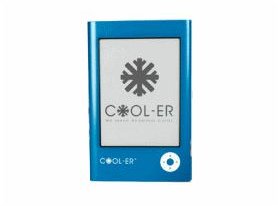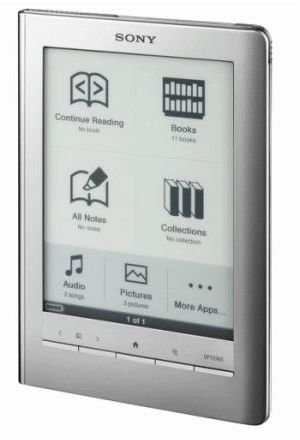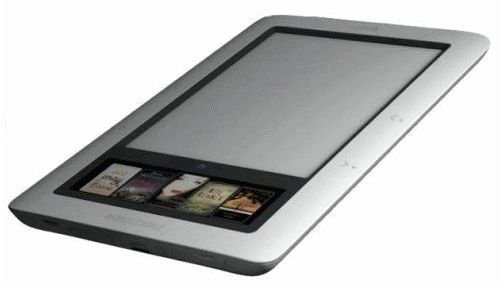Best Ebook Readers: The Kindle and its Alternatives
Alternatives to the Kindle
You could be forgiven to think the only eBook readers in the world were made by Amazon. The publicity surrounding the launch of the Kindle 2 and Kindle DX has overshadowed most of the other offerings out there and you would be forgiven for not noticing them in the marketplace.
The eBook reader is a contentious gadget at the moment. Many people simply cannot decide if they are a viable replacement for the traditional paperback or not.
While the prices remain high, they aren’t going to receive universal approval for some time yet. DRM and compatibility also rears its ugly head here too. It seems we simply can’t escape companies trying to lock each other out of their devices.
While the different brands of reader are still fighting about compatibility, the consumer cannot make their mind up about which way to jump. We saw this recently with HD-DVD vs. Blu-Ray. People simply didn’t know which one to choose so waited until the manufacturers sorted it out themselves. I think the same will happen with eBook readers. Once all the DRM nonsense is sorted, I believe uptake will pick up.
Out of the current models available, apart from the obvious, there are the Sony Reader Touch, Interead Cool-ER and the Nook from Barnes and Noble. Research into all available has shown these three to be the best Kindle alternatives.
Everybody knows about the Kindle, and Amazon have set themselves up to be the one to beat, or at least be compared against. So let’s oblige them and explore the others a bit more using the Kindle 2 as the yardstick.
The Nook
The Nook is an excellent piece of kit from Barnes and Noble, and a viable, and cheaper alternative to the Kindle 2. It has a touch screen, MicroSD slot, WiFi and a removable battery, all of which the Kindle lacks. It also has a multi-touch 3.5 inch color display which can be read quite clearly from a short distance. The color makes a surprising difference, especially when viewing images or book covers. It is certainly more attractive than the grayscale of some of the other readers around.
The main advantage of the Nook is it’s more open access policy. It can read PDF documents, books from Barnes and Noble stores and nearly half a million public domain books care of Google – none of which the Kindle does. The other advantage is that you can actually see it and try it in-store. That makes a surprising difference when choosing something like this.
Using the Nook is easy, the intuitive menu system is clear and simple to use. Another bonus, is the “Loan” feature, where you can lend a book to another Nook user or someone with a PC, Mac or iPhone.
Barnes and Noble have really thought about their device. They have them in all their stores for buyers to touch and feel. This is more likely to convert than any special offers. If you’re an existing Nook owner, it will automatically connect to the B&N network as you enter the store and display specials, coupons and any other message they want you to see.
If any of these devices are going to give the Kindle a run for its money, it’s the Nook. It’s cooler, more colorful and more open than the Kindle which counts for a lot.
The Interead Cool-ER
Despite the less than cool name, this device is pretty good. The tinted metallic case makes a nice change from the silver or white of the others. Having taken definite design inspiration from Apple, the Cool-ER has eight colors to choose from, which will appeal to the iPod generation.
Functionally it works much the same as a Kindle. It’s 400Mhz ARM processor handles the books nicely, even if turning the page appears a bit sluggish. It has 825Mb of useable storage to store data which should be enough for most people. It has a built in media player for MP3’s, but the headphone jack is a 2.5mm version instead of the standard 3.5mm.
Overall the Cool-ER is a basic but functional reader. It can read more files than Kindle, many more if you use Adobe’s Digital Editions software to transfer them. The screen is clear, but isn’t touch. If you can use an iPod then you can use one of these.
It uses the same E-ink technology as the others and it is compatible with a few formats, including ePub, PDF, HTML and Rich Text. This opens the buying market a bit, and allows you to use eBook websites to acquire the media.
In a head to head with the other two contenders I would say this comes bottom for functionality but top for looks. The brushed aluminum in a color other than white or silver will look good on any desk or bookshelf.

Sony Reader Touch Edition
This is currently Sony’s flagship reader, and the best Sony reader yet in my opinion. It is somewhat heavier and bulkier than the Kindle, but offers so much more in both the build quality, functionality and usability that there is no real competition.
The only limitation of the Touch is that it doesn’t have wireless. The only way to get media on or off the device is via USB and a PC. Apart from that, it is excellent in every way.
The touch screen is reactive and accurate, using the menus can often be done by using fingertips rather than the included stylus. You can configure the device to the nth degree using settings menu and the whole system is logical and well laid out.
The addition of the stylus adds extra functionality to the Touch. There is a handwriting feature where you can scrawl notes or draw or you can use it to navigate around the menus.
It supports ePub and Sony’s own BBeB format. This allows you to use any ePub compatible file with the reader, which adds much more freedom to the media you read. As you would expect, the MP3 player is excellent. Reproduction was the clearest of any of the devices.

So as you can see, there is much more to the eBook reader than the Kindle. It may have got things moving, but it was soon overtaken by more open, more innovative, and more attractive rivals. We don’t yet know where the technology is going to take us, or even in which direction it’s going to go. All we know is that things have to change in order for these to take off. DRM has to be impemented sensibly, allowing freedom for the consumer, and the price has to come down. Once that happens, I think you will see these on buses and trains all over the world.
